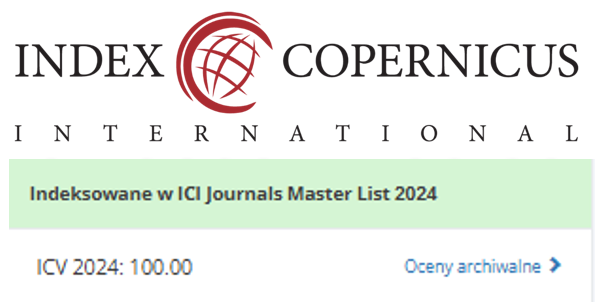Guidelines for Mixed Method
- When submitting, the content explanation and writing guidelines in this template must be removed.
- Articles submitted to the JANH should not exceed 8000 words for the main text, including abstract, tables, and references. But, in some cases, 10,000 words are allowed if needed.
- Important to note: Use Mendeley Desktop (Download for Free) as a reference management tool.", following the APA 7th edition style. The reference list should include at least 20 references, with sources no older than 5 years.
Title
- A clear and specific title containing key terms, subjects, methodology, and research significance (e.g., improvement, reduction, impact, effectiveness, efficacy), with a length of 10–16 words
Abstract
- (Write a structured abstract, including 5 headings: Background and Purpose, Methods, Results, and Conclusion. The abstract should not be more than 350 words)
Background: One or two sentences of background, the purpose of the study
Methods: Clearly describe the mixed-methods research design (e.g., explanatory sequential, exploratory sequential, or convergent parallel). Specify population, sampling technique, and sample size separately for qualitative and quantitative strands. Define inclusion and exclusion criteria. Explain measured variables (e.g., dependent and independent variables). Describe research instruments used in both qualitative and quantitative phases. Outline the basic procedure followed. Include an explanation of ethical clearance and approvals obtained. Detail statistical tests applied in the quantitative analysis (e.g., regression, t-tests, chi-square).
Result: Present the frequency distribution of general and special data. Report statistical test results in alignment with research objectives (e.g., OR, CI, RR, p-value, effect size). Summarize key qualitative findings, including themes or categories with supporting participant quotes. Provide insights on how qualitative and quantitative data are integrated
Conclusion: Present the main research conclusions and provide recommendations based on the findings.
Implications for clinical practice: highlight how research findings can be applied to improve patient care, clinical decisions, and healthcare policies.
Keywords: 3–6 words or short phrases allowing proper and convenient indexing.
(For keywords of an abstract)
- Click MeSH on Demand
- Authors Copy and paste the abstract to the Table of MeSH on Demand,
- Click Search.
- Next, you will see some blocked words, which can be used as keywords.
Introduction
- Identify research problem: why it matters, and its global relevance.
- Justification or Prevalence of Problem research: from global to specific area
- Importance of research: to show why the study is important.
- Contradictive research or highlight the research gap: Conflicting findings, Research gap
- Outline the scientific, conceptual, or theoretical framework guiding the study.
- Explain how the study variables are connected, supported by relevant theories and past research.
- Describe the link between the hypothesis, conceptual model, or theory and the study variables.
- Objective(s): Clearly state the study's purpose or research questions (e.g., "The aim of this study was to...").
Methods
Study Design
- Clearly define the mixed-method design (e.g., explanatory sequential, exploratory sequential, convergent parallel).
- Identify the primary approach (qualitative or quantitative) and how the secondary component complements it.
- Describe the rationale for using a mixed-method approach and how it enhances the study.
Participants
- Explain the sampling strategy separately for qualitative and quantitative strands (e.g., purposive sampling for qualitative, random sampling for quantitative).
- Define inclusion and exclusion criteria for each component.
- Describe the sample size calculation for the quantitative strand and justification for the qualitative sample size.
Data Collection
- Outline data collection procedures for both strands, specifying methods used (e.g., surveys, interviews, focus groups, observations).
- State the timeline and setting for data collection in each phase.
- Identify who collected the data and their role in the research.
Data Analysis
- Explain separate analysis methods for qualitative (e.g., thematic analysis, content analysis) and quantitative (e.g., descriptive statistics, regression analysis).
- Describe how the findings from both components are integrated (e.g., merging, connecting, embedding).
- Specify software used for analysis, if applicable (e.g., NVivo, SPSS, ATLAS.ti)
Validity and Reliability/ Trustworthiness
- For qualitative data: Describe credibility, dependability, transferability, and confirmability techniques (e.g., triangulation, member checking, peer debriefing).
- For quantitative data: Report validity and reliability measures of instruments (e.g., Cronbach’s alpha, construct validity).
- If new tools were developed, describe the validation and reliability testing process.
Ethical Considerations
- State the relevant ethical issues in the research.
- Confirm approval from the ethics committee, including the institution's name and approval number.
- Explain any additional approvals obtained, if applicable.
- If ethical approval is not required, clearly state this.
Results
Structured Presentation
- Organize results based on the mixed-methods design (e.g., sequential, convergent, or embedded).
- Present qualitative and quantitative results separately or in combination, depending on the study approach.
Sample Description
- Describe participant demographics and characteristics.
- Example: "The study included X participants aged Y to Z years, with A% male and B% female."
- Provide details for both qualitative and quantitative groups.
Qualitative Results
- Identify key themes or categories from the data.
- Provide supporting evidence, such as direct quotations from participants.
Quantitative Results
- Present findings related to research questions or hypotheses.
- Include statistical data (e.g., effect sizes, confidence intervals, significance levels).
- Clearly indicate whether hypotheses were supported or rejected.
Integration of Findings
- Explain how qualitative insights complement quantitative results.
- Highlight agreements, contradictions, or expansions between datasets.
Clarity and Structure
- Use subheadings for different result sections.
- Ensure each finding aligns with the study’s aims and objectives.
Discussion
- Contextualizing Findings: Interpret results in relation to the theoretical or conceptual framework. Compare findings with previous research—highlight similarities, differences, and contradictions.
- Contribution to Knowledge: Explain how the study adds to existing knowledge. Discuss whether findings support, refine, or challenge existing theories. If applicable, propose new conceptualizations, hypotheses, or methodological insights. Clearly outline the significance of integrating qualitative and quantitative findings.
- Study Limitations: Address limitations related to sample size, representativeness, and response bias. Discuss transferability of qualitative findings and generalizability of quantitative results. Acknowledge methodological constraints and potential biases.
- Implications and Recommendations: Provide recommendations for clinical practice, education, management, or policy. Suggest areas for future research to build on findings. Ensure recommendations align with study limitations.
Relevance to Clinical Practice
- Improvement in Patient Care – How the findings enhance diagnosis, treatment, or patient outcomes.
- Guidance for Clinical Decision-Making – Impact on healthcare professionals' choices and interventions.
- Enhancement of Clinical Protocols – Potential updates to guidelines, procedures, or best practices.
- Efficiency and Safety – How the research improves workflow, reduces risks, or enhances patient safety.
- Policy and Education Impact – Influence on healthcare policies, staff training, or professional development.
Conclusion
- Conclusion: This study addressed the research objectives and hypotheses, revealing key findings about (the topic). The results support (confirm or refute the hypotheses) and provide a better understanding of (the issue).
- Suggestions: It is recommended that (provide practical suggestions) to improve (practice, research, or other areas), based on the study's findings.
References
- Use Mendeley Desktop (Download for Free) as a reference management tool.
- Reference writing style: APA 7th Edition.
- Reference minimum of 20 references from reputable articles or journals, published within the last 5 years, with at least 80% from journals.
- Provide the DOI or URL for each cited article.
- Do not use abstracts as references.
- Cite unpublished manuscripts as "unpublished observations" with written permission. Papers accepted but not yet published should be marked as "Forthcoming" with the journal name.
- Avoid citing "personal communication" unless essential. If necessary, include the person's name, date, and obtain written permission.
- Click Here[Exemple of References]

















